I’m excited about today’s post, as its one I’ve been working on for quite some time [note: this is an understatement]. It’ll probably run a bit long—but hopefully it will be worth your while.
The long-awaited Winnie the Pooh Universe, also known as Winnie-the-Pooh-niverse, film ranking.
I feel qualified in this endeavor for a few reasons: my lifelong love of this bear of little brain, naming my dog after the silly old bear, having an Eeyore plush permanently on my bed/couch…my dedication to consuming Pooh content at breakneck marathon speed for the sake of this post. I started research on August 23, 2023 and finished research in September 2023. Not too bad. But writing and publishing this post spilled over into 2024. Very late 2024 that is, much to the chagrin of the friends who have heard me talk about my ranking. Hopefully I can speed up my process in the future.
There are 16 films in the Winnie the Pooh-niverse, ranging in length from 21-minute TV specials to 104-minute theatrically released films, plus all kinds of direct-to-home-video content.
Six feature-length Pooh films have made it to the silver screen; five have gone straight to VHS or DVD; four were released as short films in theaters before a feature film (more on this later); and only one TV special (that later went straight to video), as far as I can tell. Much like our own ever-expanding universe, the Poohniverse seems to expand the longer you look at it. As I researched this post, I would knock one film off my list and find two or three more that I needed to hunt down and watch.
As for the short film featurettes, the three shorts released between 1966 and 1974 were combined to make the beloved The Many Adventures of Winnie the Pooh released in 1977. A fourth short film released in 1983 to accompany a theatrical re-issue of The Sword in the Stone, and was supposedly added to VHS editions of the classic 1977 Pooh film.
What I am not including in this ranked list is the handful of Winnie the Pooh television series that have aired throughout the years (The New Adventures of Winnie the Pooh, Book of Pooh, My Friends Tigger and Pooh, etc.). Although, as I neared the end of my research, I found that Book of Pooh had a feature-length VHS movie that my family actually owned. The television series are a whole ‘nother can of worms and could be its own long-winded post.
I’d also like to one day write a little about the rides in both Disneyland and Walt Disney World — but today isn’t that day.
I am also not including Christopher Robin (2018) — though it is a dearly loved movie and great live-action film, I don’t have much to comment on it and want to get this article out into the world. It is definitely worth a watch, but adding it into this list feels as though I am comparing apples and orangutans.
So without further ado, let’s get into it.
The Rankings
16. Piglet’s Big Movie (2003)
75 minutes. Theatrical Release. Available on Disney+.
If Piglet’s Big Movie has a million haters, then I’m one of them. If Piglet’s Big Movie has one hater, then I’m that one. If Piglet’s Big Movie has zero haters, that means I’m dead.
I thought about not even re-watching this one in preparation for this post, but in the effort of fairness, I gave it another try.
It’s not *as* bad as my memory serves.
Piglet’s Big Movie has everything we want from a story set in the Hundred Acre Woods — vignettes of the gang’s adventures, 2D animation, backgrounds stylized to resemble E.H. Sheperd’s work… and yet it still falls so flat. There’s not a narrator in this installment of the Pooh-niverse, who typically adds to the story more than I realized.
I like Carly Simon — “You’re So Vain” is a certified banger — but Simon’s musical stylings for the Hundred Acre Woods are not just… not it. Simon’s soundtrack feels so out of place. Every time she breaks into song, it feels like an interruption rather than an addition. Perhaps her voice is too similar to Piglet and Kanga’s—making it almost seem like one of them is supposed to be singing? I don’t know if it’s intentional though, because the characters don’t lip sync during the songs.
For a movie supposedly about Piglet, he’s not in very much of it. For this to be Piglet’s “big” moment in the spotlight, the other characters seem to outshine him.
The easiest, most enjoyable part of the film is their search for the North Pole. Piglet’s character is most evident — he is thoughtful and selfless, facing his fears to save Roo when he falls in the river.
I’d also just like to take a moment to talk about Christopher Robin’s snow outfit in this movie. The artists were nice enough to give ole Chrissy a nice warm coat, sensible boots, gloves and a scarf — but pants? Gotta draw the line somewhere. Let your knees freeze, Christopher.
The story treatment for the characters in Piglet’s Big Movie is maybe my largest gripe. It makes every lovable character in the Hundred Acre Woods out to be insensitive jerks to Piglet. I know the point of the film is we’re supposed to see how much Piglet matters and that his friends learn to appreciate him — but painting beloved, charming, sweet characters out to be insufferably selfish, exclusionary, bullies is not my favorite way of getting that message across. The mute woodland creatures are better friends to Piglet than the gang is.
I think part of the issue I take with the character treatment is that the characters are not only bad friends to Piglet, this movie consistently shows them all being bad friends to each other. From using Eeyore as a launchpad to get ahead of the bees and abandoning him for their own safety, resulting in Eeyore getting stung, to being unappreciative to Owl in his attempt to help (albeit longwinded), the “clique” outlined in the beginning of the film doesn’t even really care for those in the in-crowd.
Rabbit has always been depicted as uptight and blunt, so his mean comments towards Piglet make the most sense in this story. I’m willing to overlook those, they make a bit more sense, even if they are more intense than usual Rabbit-isms. But often, this movie uses Pooh, Piglet’s best friend, as a device for leaving him out and making him feel bad. “Piglet, don’t get in the way of our big plan!” is a real line in the opening scene delivered by Pooh. I know in real life, friendships have many, many layers and occasionally we’ve all done or said the wrong thing—but I’d hope that in the idyllic world of the Hundred Acre Woods, we’d give our characters a bit more integrity.
Even characters like Kanga aren’t spared from the everybody-hates-Piglet plaguing this script. Kanga, the mother figure to the whole Hundred Acre Woods has the line, “You don’t want to grow up to be small and weak like Piglet!”
You also see Roo completely naked in this film. Feels weird. I know that most all residents of the Hundred Acre Woods are nudists, but Roo not having a shirt felt very odd.
This one is painful to get through for me; the story drags and there’s a lot to be desired. I can’t imagine what it would’ve been like to watch this in theaters.
I just find the combination of a bad soundtrack and lack of respect to the personalities of each character for the sake of making Piglet feel bad to outweigh the positive aspects of this movie.
It’s virtually impossible to find any concept art, isolated background art, etc. SIGH, I suppose that is a byproduct of outsourcing the work. Not that anyone is really going to be too torn up about missing artwork from the worst film in the Pooh-niverse. Sorry to my friends Daniel and Chris who are known Piglet’s Big Movie apologists.
15. Winnie the Pooh: Sing a Song with Tigger (2000)
27 minutes. Direct-to-Video Release. Not available on Disney+.
This sing-along was released pretty obviously as promo for The Tigger Movie that hit theaters a month prior to this home video. It features several songs from The Tigger Movie and others from an array of Pooh films — including Pooh’s Grand Adventure, Boo to You Too!, and even the series The New Adventures of Winnie the Pooh. There are only 2 original songs on this sing-along (which to be fair, makes sense — who would want to sing-along?) both featuring a buffet of archival footage. The songs from New Adventures did feel fresh, but only because I’ve not been exposed to that series.
The sing-along was centered around Tigger’s scrapbook, which was somewhat interesting; there is also a scrap of bonus content at the end where Tigger tells audiences about scrapbooking.. The scrapbook transitions are the only thing I can find to be original in this recycled animation compilation. Even the bad CG opening is recycled from Seasons of Giving, more on that below.
To be completely fair, there’s not much a sing-along can really do to rise higher among the ranks of a list such as this. It’s not the sing-alongs fault that it’s just repeating something else that already exists. It just doesn’t wow me, at all, and other films are fighting for their lives out here.
14. Winnie the Pooh: Sing a Song with Pooh Bear (1999)
36 minutes. Direct-to-Video Release. Not available on Disney+.
Virtually the same as the previous entry in this list — scary CGI opening, archival, recycled animation compiled together for a direct to video release. The main differences are that there is a narrator guiding us through transitions between songs rather than Tigger guiding us through his scrapbook of memories and the songs have a heavier focus on Pooh.
One of the main problems I have with these compilation-style releases is the obvious quality differences between songs. The voice actors change drastically sometimes as a byproduct of the Frankenstein nature of the project.
The only reasons this rated slightly higher than the Tigger sing-along is that this sing-along features the song “Heffalumps and Woozles,” which is inarguably a fantastic animation sequence. And the bonus content that teaches you to draw Pooh. I think I would’ve enjoyed that if I had watched this VHS as a child.
13. Winnie the Pooh and a Day for Eeyore (1983)
22 minutes. Featurette, theatrical release. Not available on Disney+
This short featurette was originally released in theaters with a re-issue of The Sword in the Stone. It then went on to be included as bonus content on some copies of the VHS for The Many Adventures of Winnie the Pooh. And since then, its mostly been lost. The short isn’t available on Disney+, and after watching it…I kinda get it. It’s not the worst short by any means, but it falls short in a lot of places.
Personalities feel slightly off in this short, but not nearly as bad as Piglet’s Big Movie. There’s a lot of stills and holds that make the animation feel cheaper and lower budget than the 3 preceding featurettes making up The Many Adventures.
The voices in this one felt very off, and when I did a bit of digging I found that Pooh, Rabbit, Eeyore, Kanga, Roo, and the Narrator all had a change in voice actors. None of these new actors returned for any other Pooh films. Tigger, Owl, and Piglet are the only familiar voices (with this being the last film for Paul Winchell as Tigger before Jim Cummings takes the reigns).
The good things about this short — we see the characters play Pooh Sticks, Owl “writes” an insane birthday card, and we see those intricately detailed painted backgrounds. I think this type of detail, the intimate depiction of nature is truly a landmark trait of Winnie the Pooh films.
Some things in this one just come across as odd to me: Piglet being off model in the opening theme, Piglet exploding on a balloon, and some of the linguistic choices. There are a few instances characters say “uncheered” and “many happy returns of the day.” There isn’t anything inherently wrong with either phrase, they just aren’t in the popular vernacular anymore — which does add a bit of charm to this short.
With the obvious step down in quality in voice talent and animation from its precursors, I understand why you have to seek this one out from other sources online.
12. Winnie the Pooh: Seasons of Giving (1999)
70 minutes. Direct-to-Video Release. Not available on Disney+
This was the most difficult to find of all the Pooh content I researched. I ended up finding a segmented Youtube playlist where someone had recorded their VHS and uploaded the footage. Not so sure how well that would hold up in court, but I found it useful for my research.
The bad horrible scary heinous CGI intro (reused in both aforementioned sing-along releases) alone is enough to make me understand why this isn’t available to stream — Disney wanted to lose this one. Starting off on a low point like that, I expected this to be a more painful watch than it actually was.
This holiday special has three shorts compiled together with no interconnected plotline (other than the general holiday seasons occurring chronologically in each short). A Winnie the Pooh Thanksgiving originally aired on ABC on Thanksgiving Day. It now lives bookended by Groundpiglet’s Day and Find Her, Keep Her; both episodes are taken from The New Adventures of Winnie the Pooh television series.
There’s a dreamy, wistful, pastel quality to the backgrounds that gives you the warm fuzzies. They’re not my favorite of all the backgrounds in the Poohniverse, but they’re sweet. It may have been because I was watching a busted Youtube recording, but the backgrounds almost felt washed out. I’d be curious to see what the originals looked like, but I can’t find any isolated background art for this one.
My favorite was the Thanksgiving special. I’ve always loved a good Thanksgiving special. What does Christopher Robin know about Thanksgiving? I would absolutely pull up to the Hundred Acre Woods for a meal with the gang. Rabbit is pressed that its not a “traditional” Thanksgiving meal, but let’s give the gang credit where credit is due: they know how to compile a charming smörgåsbord. Pooh brought honey (obviously), Piglet came with a basket of haycorns, Eeyore with thistles, Tigger brought hot chocolate ice cream, Owl brought fresh biscuits, and Gopher brought lemonade to wash it all down with.
I think each short has some merit, but compiled together, as a whole this felt like it drags. The Thanksgiving short can definitely stand alone, and would be one I’d revisit if it were easier to find online. There’s even a Thanksgiving song! You don’t often get those — outside of Ben Rector and Adam Sandler.
Overall though, having 1/3 shorts carrying the weight of the film means this short rates pretty low on my list. If it was all Thanksgiving, it would likely be a few spaces higher on this list. Groundpiglet’s Day was very OK. I didn’t feel like Find Her, Keep Her really fit into this mix, because it was basically just a Christmassy beginning and a flashback to the New Adventures episode that introduces Kessie. I think Kessie is sort of annoying in that short, but it’s nice to see Rabbit being caring and sweet instead of controlling and mean (which he does kind of regress to that, but its refreshing for a moment).
11. The Book of Pooh: Stories from the Heart (2001)
76 minutes. Direct-to-Video Release. Not available on Disney+ (although its television series counterpart is available to stream)
Stories from the Heart is another of the compiled releases — this time compiling six stories from the Book of Pooh series from Playhouse Disney.
The issue I have with this one isn’t the story or the puppets. In fact, I think the puppets are really impressive and well-done.
My gripes with this Book of Pooh is the style of the backgrounds. I am willing to forgive that the integration of the green screen backgrounds and the foreground puppets may not always be fully seamless. It was 2001, after all. My issue is that we decided to key in CG backgrounds that are overly saturated (also somewhat forgivable considering the target audience is literally toddlers). The textures are stretching and warping in unsavory ways. Perhaps if you don’t know what you’re looking at, it is passable, but it makes me cringe.
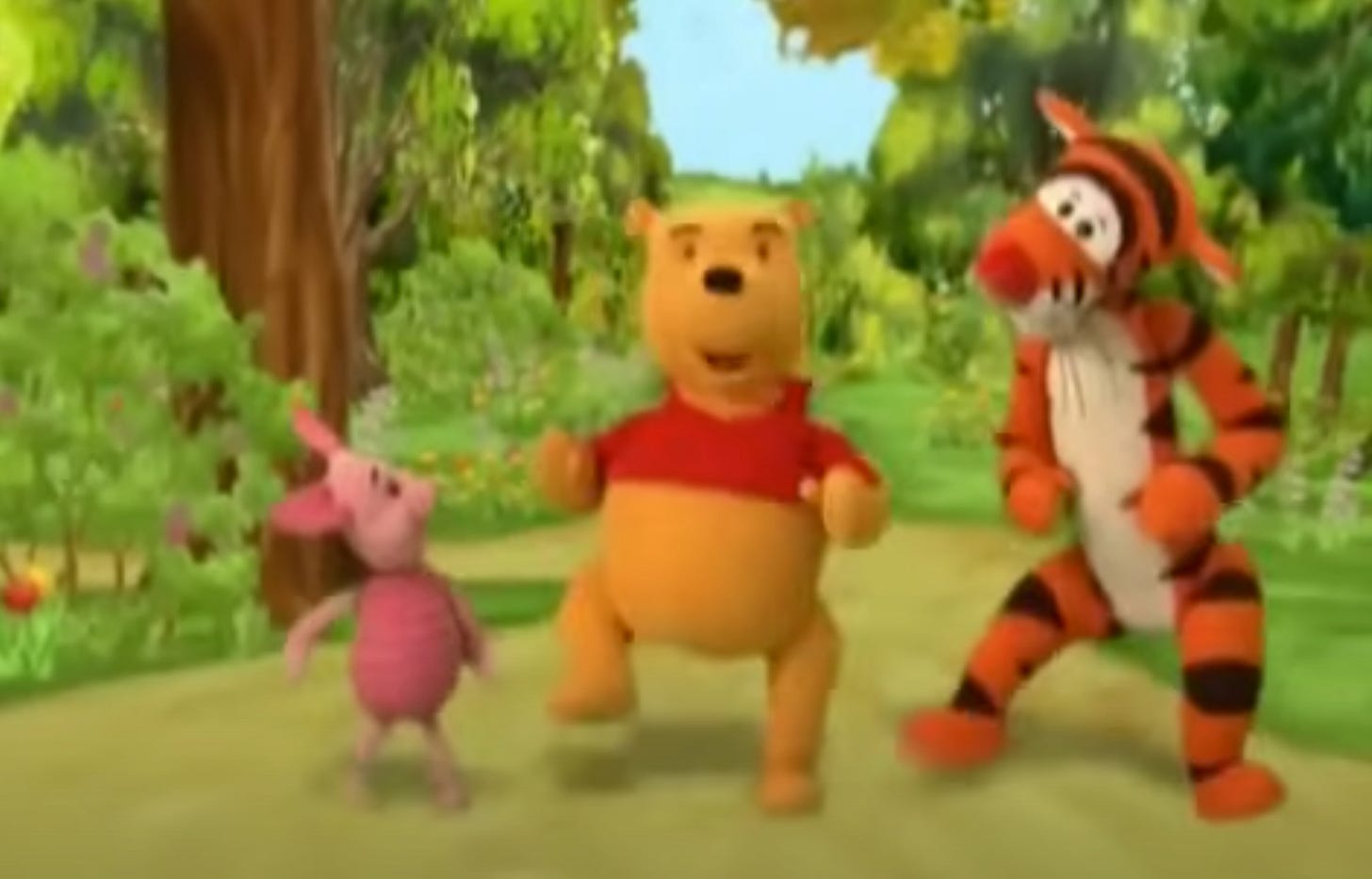
Book of Pooh slams the door on most of the artistic conventions we’ve seen previously established by the franchise (pastel backgrounds and traditional animation) in favor of innovation (CGI and puppeteering). While not all of these choices are wholly successful, I do believe there is some merit to be found in Book of Pooh: Stories from the Heart. I have not watched all of the episodes in the series, but my assumption is that this direct-to-video release sums up the series neatly.
10. Winnie the Pooh: A Valentine For You (1999)
22 minutes. TV Special, then Direct-to-Video Release. Available on Disney+.
Winnie the Pooh doesn’t have thumbs in this one, which is interesting because it brings Pooh closer back to his original E.H. Shepard design, but further from his original Disney design. Frank & Ollie divulge in The Illusion of Life that they specifically gave him thumbs to make it easier for him to grab things, namely honeypots.
Also, speaking of being off model — Eeyore, for some reason, has blue eyes in this film. No real explanation for that. Just wanted to note that to you readers.
Kanga & Roo are notably absent from this one, while Gopher (who feels like much more of a fringe character) is present. This short also made me realize that Kanga is the only girl in the whole Hundred Acre Woods, meaning that none of the films are ever gonna pass the Bechdel test.
The most important thing I have to share for this short is this:
If nothing else, you should watch this one just to see Piglet all dressed up.
There’s not a ton of children’s specials directed to Valentine’s Day, so I appreciate the innocence this brings to the table. It’s sweet — making Valentines for friends, Christopher Robin having a school crush, catching fireflies. The scary lost-in-the-woods trope wasn’t on my bingo card for this Valentine’s themed episode though. It’s not the best installment of the franchise, but I think there’s been worse.
This TV special obviously has some budgetary restrictions, but they still attempted to do storybook transitions (albeit they are cheap and forgettable), which I appreciate. Winnie-the-Pooh films that abandon the storybook and narrator lose quite a bit of merit in my eyes.
Nearly every Pooh film has a musical element, but I think this one would’ve been stronger without it. The song isn’t catchy. I don’t even really think I could hum the tune, even though it basically closes the story and I just finished watching it.
Overall, forgettable.
9. Boo to You Too! Winnie the Pooh (1996)
21 minutes. TV Special.
Anytime I get to see a character in an alternate outfit, I’m excited. Halloween specials are prime for this. Boo to You! Winnie the Pooh lives up to that expectation; originally this was aired as a television special on ABC. Later it was added as a supplementary flashback to Pooh’s Heffalump Halloween Movie.
One of my favorite parts of this special is the recurring gag of Gopher reappearing in different costumes of the ancillary characters. It’s very sweet that Pooh is willing to cancel Halloween because Piglet is scared, instead making a less frightening “hallo-wasn’t.” It reminds us to meet our friends where they are and include them in inventive ways. I also really like Tigger’s song and the stylization on that sequence.
It does pale quite a bit when directly compared to the Heffalump Halloween that boasts smoother, brighter animation. It does have a lovely, vintage charm that is hard to explain or replicate in modern animation.
There’s not too much to report on this one. It’s sweet and I love the costumes, but it is mostly unremarkable to me.
8. Pooh’s Grand Adventure: The Search for Christopher Robin (1997)
76 minutes. Direct-to-Video Release. Available on Disney+.
This is the Winnie the Pooh franchise’s very first direct-to-video sequel, and it is about as medium as it can be. It’s also the first to have one overarching central story, rather than a grouping of shorter stories. While the storybook in Christopher Robin’s bedroom opening is absent, the narrator does appear briefly to close out the story (although he is missing from the rest of the tale).
Artistically, this film does some things I found to be quite interesting. Particularly, when Christopher Robin is trying to explain to a distracted Pooh Bear that he will be going away for a time, there is an extremely intelligent color design choice as the sky shifts from a golden yellow and pink sunset to cold blues as the reality of his news weighs on him. It’s very subtle but very effective choice. It is nearly impossible to find a screencap of this, and Disney+ won’t let me screen capture myself, so you’ll need to go watch with careful eyes to see for yourself.
The backgrounds in this film return to the lighter, soft painterly backgrounds that are more reminiscent of the original Milne style. The pastel colors melt into the page and there is a heavy focus on the inking lines. There is a beautiful heaviness to the line weight.
The journey to find Christopher Robin is quite the odyssey. We see places in the Hundred Acre Woods that are explored in this film and then never ventured to again. That’s pretty special.
This film has some pretty famous quotes in it as well.
“You're braver than you believe, and stronger than you seem, and smarter than you think.” Christopher Robin
I’ve heard this quote dozens of times, seen it written on inspirational posters tons, but I’d never seen (or perhaps, never noticed) it attributed to Christopher Robin so I never had any idea it came from Winnie the Pooh. Kind of fun to get that reference now.
Up until this movie, I thought Piglet was naked, and that the darker pink color and stripes were some sort of armadillo-type shell. Maybe that doesn’t make a ton of sense, but many of the characters in the Hundred Acre Woods were naked — outside of Roo and Pooh, clothes only seemed to be seasonal accessories. Needless to say, I was shocked when Piglet got picked up by the kaleidoscope of butterflies.
Owl isn’t as literate as he thinks. You’re always in for a misadventure anytime you request Owl read anything for you. For the record, though, I do like Owl.
This one doesn’t have bad music. In fact, I especially liked the “Gonna Be Grand” and the stylization of the sequence. Catchy tune, fun animation, what’s not to like?
I’ll tell you what’s not to like. I admit my gripe list is pretty short for this one when compared to some of the others.
No thumbs for Pooh Bear in this film. Typically, this is an indicator of lower budget animation.
I had to watch this film in multiple sittings because it wasn’t particularly gripping and much of it was similar to things we’d already seen before. The ending is nearly identical to the short Winnie the Pooh and Tigger Too.
7. Winnie the Pooh: A Very Merry Pooh Year (2002)
65 minutes. Direct-to-Video Release. Available on Disney+.
When revisiting the Pooh direct-to-video releases, most of which center around holidays, I didn’t think I’d seen this one before—but as I began to watch, the nostalgia began to hit me. I definitely grew up seeing this WtP Christmas special.
This movie is made up of two shorter stories, Winnie the Pooh and Christmas Too (1991) and Happy Pooh Year (2002, created for this release). As a whole, Very Merry Pooh Year is delightfully warm, cozy, and innocent. It has all the charm you want from Winnie-the-Pooh and all the endearment for a classic holiday special. We get to see characters decorating their homes in their own unique ways (like Rabbit’s tree being decked out in carrots), making exorbitant Christmas lists, the “did Santa get our letter?” drama, seeing the ever-so-charming Hundred Acre Wood covered in snow.
Since they were produced a few years a part and later stitched together for this release, there’s some differences in production and quality. The first short stands out as slightly better to me. It seems like there’s some subtlety that the second short lacks. There’s a few moments I noticed that they took the time (and therefore, money) to do some subtly wind effects in an outdoor scene. It wasn’t fully necessary, but it certainly added a bit of quality.
innie the Pooh and Christmas Too had a few gags that really made me laugh. Rabbit dropping an ornament and it getting stuck in Eeyore’s nostril… Piglet accidentally inhaling the air from a balloon and bouncing around the snow… lots of silly moments.
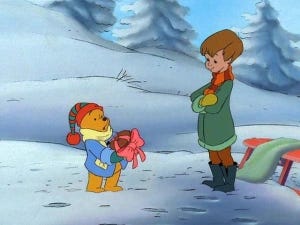
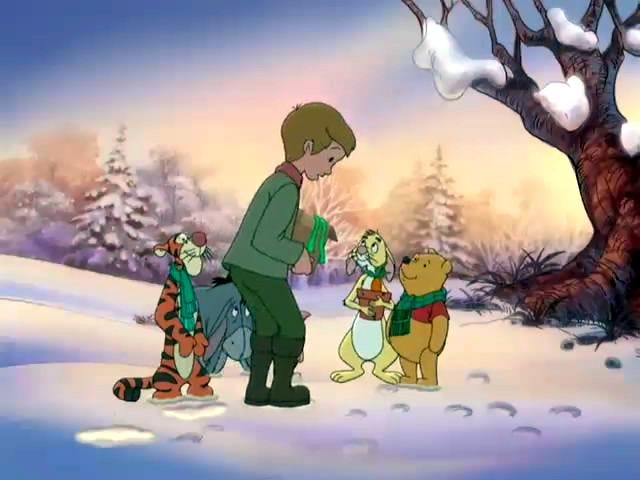
Furthermore, on fashion — Tigger undoubtably has the best winter fit. Winnie the Pooh and Piglet aren’t far behind though. Pooh’s Santa outfit, and him playing Santa is one of my favorite parts of this film (just try to tell me that seeing a chubby ol’ bear shimmy down a chimney isn’t endearing).

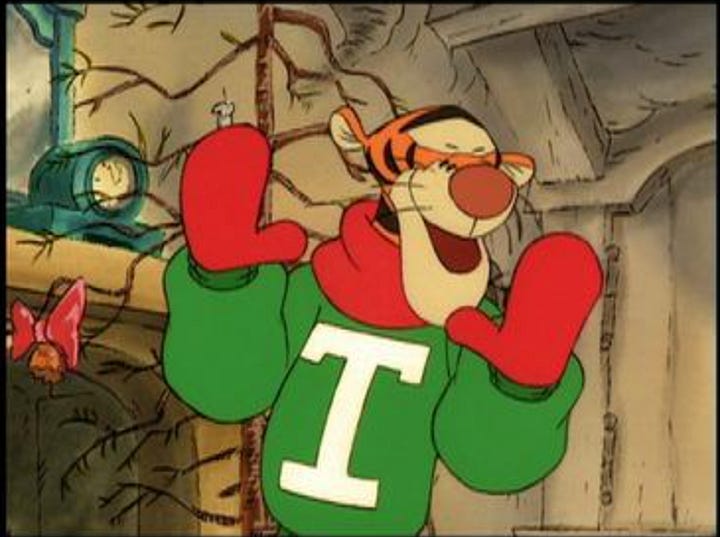
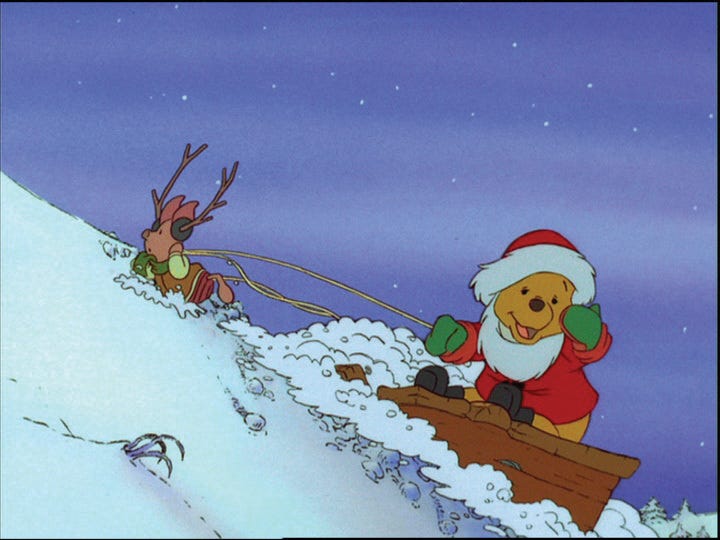
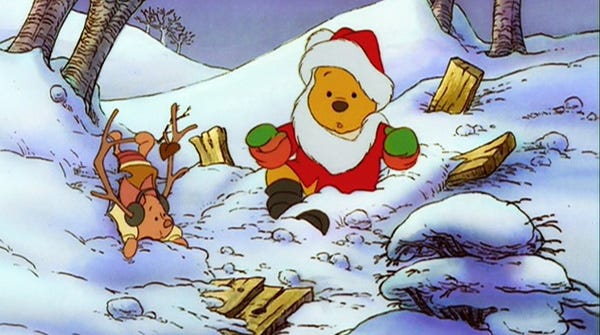
There is conflict between the characters especially in Happy Pooh Year, but they aren’t mean to each other and learn to appreciate their differences in a meaningful way. Part of the conflict of Happy Pooh Year leads the characters to try to change aspects of their personalities, by channeling aspects they admire in their friends. This leads to some pretty funny gags, the best of which being Eeyore walking bipedally and cheerfully eating honey in a red shirt. His impression of Pooh is curious—cheerful Eeyore is an oxymoron.
Overall, the message of this short film can be summed up with Christopher Robin’s sweet comment just before credits roll, “Friends help you to be more of who you are.”
Admittedly, much of my review centers around the first short. The second is pretty forgettable (as most New Year’s specials are —yeah, I’m looking at you, Rudolph’s Shiny New Year). I think that the second one has some bizarre elements that make it a bit less palpable than its Christmas counterpart.
In the vast landscape of holiday films, Very Merry Pooh Year may be mostly forgotten by the general psyche, but it’s a wholesome special that I could see myself showing to my kids one day, or watching with a big mug of hot cocoa on a cold night in December all on my own.
6. Pooh’s Heffalump Halloween Movie (2005)
67 minutes. Direct-to-Video Release.
Pooh’s Heffalump Halloween Movie opens in the bedroom of Christopher Robin (although he is notably absent from this installation), storybook-style with no “page turning” transitions. However, Roo does tell a story to soothe Lumpy that is used as a flashback to an earlier TV special (Boo to You Too! Winnie the Pooh, #10 on this list).
Let’s discuss the positives first.
The songs and costumes are really cute in this. There were many moments I actually laughed out loud (this moment and this whole scene in particular). We see some unique locations described in the style (like a cave! I think the only other time we see a cave is in Pooh’s Grand Adventure). We also get extremely sweet themes of empathy and acceptance — Roo sitting with Lumpy when he is scared and Pooh suggesting cancelling Halloween to better accommodate Piglet’s fearful nature.
A neutral point: the backgrounds in this one feel digital. They’re fine, I don’t dislike them, but they feel like digital art. The foregrounds are sharp and crisp, and the backgrounds have perfect gradients and a haziness that I suspect was created with an airbrush or a basic round brush (made from pixels) rather than a paintbrush. Lots of the backgrounds give me clues that they were created digital media rather than traditional analog paintings.
To be completely truthful, the quality difference between the present and flashback animation rated this movie a few slots lower. Overall, it is a pretty strong Halloween special. There’s nearly a 10-year gap in the animation and it really shows (and so do the differing budgets!). The animation quality disparity takes me out of the story and into noticing technicalities. Having to switch my brain from 2005 to 1996 and back again is a lot to ask for a 67 minute special. 1996’s flashback was cheaper and cheapens this overall story.
There’s some character model discrepancies — Pooh’s thumbs come and go throughout the movie. Rabbit’s eyebrows are sometimes whispy and other times completely blacked in.
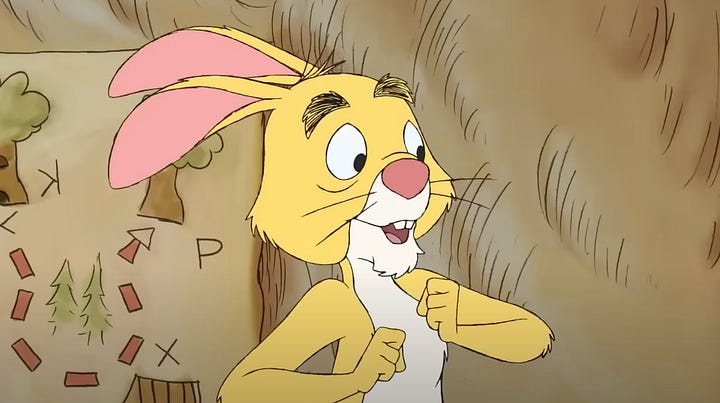
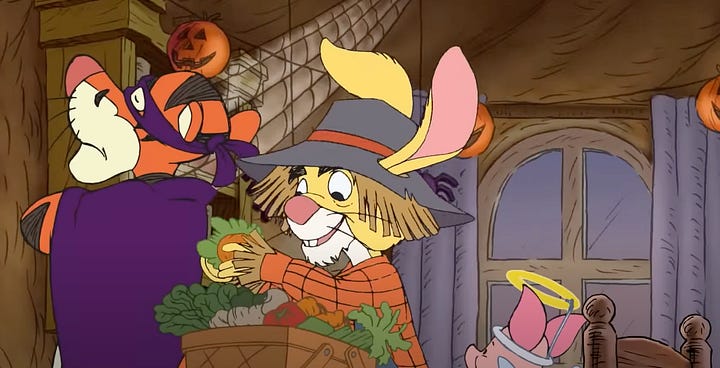
5. Winnie the Pooh: Springtime with Roo (2004)
65 minutes. Direct-to-Video Release. Available on Disney+
My personal biases are showing a bit with this one. This was certainly a movie that I logged a lot of childhood watch-hours with.
Genuinely though, how many Easter movies can you think of? Outside of Hop and Passion of the Christ, there really aren’t that many. This one isn’t religious, but I can definitely rate it higher than Hop. Christopher Robin is completely absent from this film. I assume the choice to exclude him is because the special is based around a religious holiday (sans all the religious parts) and they don’t want anyone assuming Christopher Robin could perhaps be a Christian.
Springtime with Roo has the classic live action storybook opening, a new voice actor taking over the role of narrator, and makes great usage of the storybook throughout the 65 minutes. The backgrounds are rich and saturated reflecting the seasonality and the beauty and softness of the Hundred Acre Woods in spring.
There’s a couple fun little songs and gags throughout, like Pooh sneezing Tigger’s stripes off.
Rabbit has always been kind of “mean” and we see real character development in this story. We see Rabbit transform from the control freak that makes a scale model for how he plans to force his friends to clean his home to being an inclusive and welcoming host that shares the leadership roles with his friends. This transformation is played out through a Dickens-esque storytelling, cleverly using the narrator and the storybook pages to travel backward and forward in time (rather than three ghosts and a dream sequence).
Pooh has thumbs! It’s always better when Pooh has thumbs.
I want to go to Rabbit’s Easter party at the end. One thing all these holiday specials prove is that the residents of the Hundred Acre Woods know how to party.
I would also like to mention that this DVD had a bonus feature game that I absolutely ADORED. Here is a playthrough video so that you can also experience this.
4. Pooh’s Heffalump Movie (2005)
68 minutes. Theatrical Release. Available on Disney+
Picture this. We open directly in the Hundred Acre Woods, skipping the live action storybook.
I didn’t recall much about the Heffalump Movie from my childhood, so my expectations were pretty low. I was pleasantly surprised at how much I liked it.
First, in the opening, I’d like to point out two quick things about Piglet:
Piglet’s house isn’t a primary story location in any Pooh films, so seeing his bedroom and haycorn wallpaper is fun. We also see his clothesline, which further confirms that Piglet, in fact, does wear clothes.
The art direction in this one is scrumdiddlyumptious. Solid animation. The story beats are simple but effective and drive the message home. Carly Simon does a few songs in this feature, and while they aren’t my favorite songs in the Poohniverse, the songs are more naturally integrated and less obtuse and intrusive than in Piglet’s Big Movie. We introduce a new character to the Hundred Acre Woods in a way that doesn’t feel forced.
I was able to find this production drawing from the movie. I think the animation in the Heffalump Movie is pretty good, especially considering only a third was done in-house at Walt Disney Pictures. Pooh doesn’t have thumbs though.
Kanga reads to Roo at bedtime — crazy thought, in the future, maybe we should ask her to read notes from Christopher Robin? Owl’s track record hasn’t been awesome!
Finally, this movie has a criminally underrated credits sequence. It is delightfully sweet. We see Lumpy and other Heffalumps integration into the Hundred Acre Woods through brief vignettes. Here’s a (low quality) recording of the (high quality) credits.
3. Winnie the Pooh (2011)
63 minutes. Theatrical Release. Available on Disney+
This film killed 2-D feature animation at Disney.
Not on purpose. It has all the trimmings to be a great film… it’s release and marketing strategy (or lack of) really was the final nail in the coffin for shutting down Disney’s 2D department. 2011 Winnie The Pooh was given a limited release in select theaters, the same weekend as Harry Potter & the Deathly Hallows Part 2. AKA one of the most highly-anticipated releases in the last 20 years. And Disney scratched their heads and wondered why a 2D animated film with little-to-no marketing didn’t make gobs and gobs of money. Must be that audiences hate 2D animation.
Anyways, that story is besides the point. It just always makes me a bit sad. This film is such a step-up in many ways from sequels and revitalizations of the franchise from previous years.
For instance, take these production model sheets a testament to the team being willing to do their homework — very few Pooh films have any kind of model sheets that you can find online. The first sheet is referencing Milt Kahl (the original animator for Tigger) and his stylistic choices when drawing him.
The story in this film isn’t bad either. It’s charming, it has decently funny gags, and the characters are all written to be delightful versions of themselves. No qualms with how they’re represented in this one.
The backgrounds on this film are just fantastic. They don’t have that obviously digital quality that I’ve complained about for some of the films. They have a way of transporting me to the Hundred Acre Woods that some of the lower budget backgrounds just can’t. Overall, there’s a quiet moodiness about this installation’s backgrounds that is distinct to this film. Look at this one:
Not only do they respect the natural beauty of the forests, they are also able to capture the magical cozy feeling in the sets for indoor scenes. Take this one from Owl’s house. Just lovely.
It isn’t 1977 Many Adventures, but I would argue this one is severely underrated. Nobody saw it. Many of you readers will probably disagree, because you don’t have the same level of nostalgia for this one as you do your favorite Pooh film. But I’d invite you to watch one of the worse-for-wear films on this list, and compare how low budgets and short turnarounds treat the characters and backgrounds compared to this one. This watches like a genuine tribute to so many years of Winnie the Pooh, you can tell by how lovingly crafted it feels. While oft overlooked, it truly is beautiful; a worthy entry to the collection as the last hand-drawn film at the Walt Disney Company.
Visit this link and spend a bit of time with the production art compiled here.
2. The Tigger Movie (2000)
77 minutes. Theatrical Release. Available on Disney+
Fun facts to start us off: this is the second Winnie the Pooh film to have a theatrical release (second to Many Adventures from 1977). Everyone can thank Michael Eisner for that, as originally the film was slated to be direct to home video, but Mr. Eisner realized we had gold on our hands here. This film also held the title of becoming the highest-grossing film in the Winnie The Pooh franchise until it was surpassed by Christopher Robin in 2018 (take that Piglet’s Big Movie).
This Letterboxd review of mine sums things up pretty well. This Pooh film (or should I correct myself, this Tigger film) has a surprising amount of emotional depth to it. Tigger explores the line “I’m the only one” from his theme song in an unexpectedly emotional way, searching for family and trying to connect with his roots.
The characters of the Hundred Acre Woods gang band together and impersonate Tiggers. There’s a moment where Owl hoots in the cadence of Tigger’s trademark holler. We see the gang trying to comfort a friend who is hurting. Ultimately, themes of found family triumph.
This background was done by Toby Bluth. It really captures the coziness I look for in Pooh Tigger films.
The art style in this film is classic and has such a distinct warm palette (by comparison, much warmer than 2011). The identity of the movie is clear, even if Tigger is struggling with his own identity.
Overall, I really love this film. It’s such a good watch.
1. The Many Adventures of Winnie the Pooh (1977)
74 minutes. Theatrical Release. Available on Disney+
I believe if you’re only going to watch one Pooh film, this is about as good as it gets.
This movie is three twenty-ish minute shorts released between 1966 and 1974 compiled to one feature length movie released in 1977. It took Walt a while to procure the rights to the classic Milne characters.
I’ve been very careful to point out which versions utilize the storybook and which do not because to me, it’s a tell-tale sign of which are True Pooh Films. I think it is effective for many reasons - the largest being The Narrator. The Narrator is an unsung hero to the Pooh films. Characters interact with him, he is a plot driver in many ways.
Quintessential Winnie the Pooh features the storybook setting. Running along the pages and bouncing through margins is part of what makes the films so delightfully charming. The wittiness of lines like “Narrate me from down here!” add so much whimsy and joy.
Additionally, the narrator and storybook format are what allowed Winnie the Pooh to exist as a film without exactly sticking to the source material. The storybook format allows the audience to be whisked from scene to scene, skipping moments that wouldn’t work as well on the silver screen.
A quick list of reasons this film is the king of all Pooh films:
Features the most charming version of theme song
Rich, velvety line quality other Pooh movies lack (looking at you Piglet’s Big Movie and others with highly digitized pipelines)
There’s a moment in “Up, Down, Turn Around” where Pooh’s head goes 360°
Though the easiest way to watch them is on Disney+ in one go, if you were to ask me to rank the three shorts as stand alone films, I would give the following order (with the caveat that you understand that they’re very all very close contenders and this was a difficult ranking):
>3. Winnie the Pooh and Tigger Too (1974)
Of the three shorts included in MAoWtP, this one has the least focused story elements. It’s mainly just Tigger bouncing around the Hundred Acre Woods and Rabbit trying to be the boss of everyone (classic Rabbit). And yet, it’s still remarkably enjoyable to watch. Not much happens, but the style of backgrounds has really grown up and found its footing (more on that later) and the animation is bouncy-flouncy-fun-fun-fun-fun.
Watching these in chronological release order (Honey Tree, Blustery Day, Tigger Too), you see the studio’s confidence in the style grow. Backgrounds have more saturation, character models have been settled. Though none of these things feel jarringly different through the trio of the MAoWtP, because the differences are just subtle enough to be noticeable if you’re looking for them.
Christopher Robin has a sweet little goodbye moment with Pooh that is so tender my heart could burst. Pooh promises to never forget Christopher Robin, a little bear always waiting for him. I think the Christopher Robin live-action movie pretty directly references this scene which is just wonderful.
And Christopher Robin slays in this turtleneck, which I couldn’t let the moment pass without mentioning:
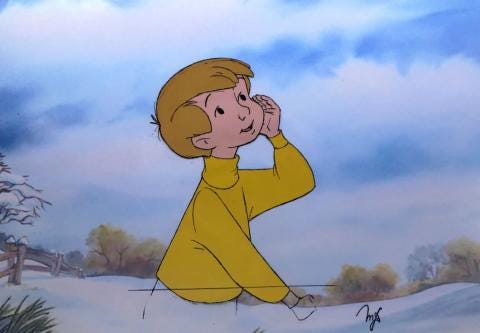
>2. Winnie the Pooh and the Honey Tree (1966)
Winnie the Pooh and the Honey Tree is the last short film that Walt Disney worked on before his passing.
This is the first of the trio of featurettes that make up the MAoWtP, and I think the simplistic, stripped-back watercolor backgrounds are especially telling to it being the first installment, as they’re still working to figure out that perfect style.
The backgrounds are even more pastel than usual — muted water color washes over delicate inking. They are looser around the edges and we don’t really have horizon lines, there’s just a gradient of sky colors that melt into the page.
This installation of the series seems to try to honor the art style of the books through the backgrounds most. The intricate inking is most reminiscent of the art style of the illustrative style of EH Shepherd, since the animated gags would be a bit more colorful than AA Milne had written them. Shepherd was not a fan of the film’s adaptation of the style. Though Shepherd despised the Disney-fication of Pooh, audiences were delighted with the on-screen depiction.
Gopher proudly reminds us, multiple times, he’s “not in the book, you know!” As a child, I always thought he was meaning he wasn’t in the phone book and that Owl better keep a hold of that card he’d been given.
But Gopher really wasn’t in the book! Gopher was created for this short. Initially, audiences HATED him too. The “not in the book” joke seems to be such a funny acknowledgement that Milne diehards were gonna immediately have something to say about Gopher.
It’s fun to see a fourth wall break like that in the sixties. The inclusion of Gopher, a completely made-up-for-tv character is interesting. He stays on the fringes of the Hundred Acre Woods, included and excluded from specials as the story needs dictate. Knowing the context that he was not in the books gives a little more understanding as to why he’s often left out — though I’m not entirely sure why he was created either.
Piglet is notably absent here though, which audiences were not about. I better be hearing some racket from those of you who are Piglet fans on this subject as well.
>1. Winnie the Pooh and the Blustery Day (1968)
I think this is the most perfect, most Pooh short of all. It has everything you want. Watching it is like a warm hug. We see Pooh all wrapped up in blankets, which is how I want to be when I watch this. Calming, comforting, perfect little featurette, making it my best-of-the-best Winnie the Pooh film.
Piglet is introduced to audiences in this film. What’s not to like about that guy — again, Piglet fans better make some noise in the chat. We meet Tigger too, which is, of course quite the adventure.

Compare this moment above with the background I included from the Honey Tree of Rabbit’s house, and you’ll see firsthand what I mean about the backgrounds gaining saturation and confidence in the stylization.
There’s some really great stuff here on a technical level. Camera movements and holds give the visual effect of Owl’s house rocking (this link is an abridged version on youtube).
One of the greatest, most notable visual sequences from the Pooh-niverse is part of this short, too. I am of course referencing, heffalumps and woozles (another abridged version). The dream/nightmare sequence might’ve been a bit spooky as a kid (I have positive memories of this sequence actually, likely because it is represented in the Pooh ride at Walt Disney World).
There’s a really interesting and experimental use of color, pattern, and shape throughout this number that I just find to be so captivating.
The music in this short is unbeatable. Not only do you have the Heffalumps and Woozles song, you also get Rain, Rain, Rain Came Down, Down, Down. Arguably, the best song about rainy days ever written. Sorry to Bambi fans, Little April Showers is #2, but it doesn’t feature words getting rained off a page…that’s just good visual storytelling. And Little April Showers doesn’t feature rainwear for characters - and as previously stated, I’m a sucker for a good secondary outfit.
Frank and Ollie make note in the Illusion of Life that dot eyes cannot float around on a head, which was a quick way to re-direct most character’s attention in a cartoon. The decision to give Pooh (and other characters in the Pooh-niverse) dot eyes was deliberate — Pooh has to turn his whole head to look at something, its more toyetic and contributes to his believability.
In Conclusion
There you have it. The Winnie the Pooh-niverse, ranked, definitively. I would absolutely recommend watching many of these for yourself. Even the ones that are harder to find to watch. Some are wacky and fun and some are weird and lost to time for good reason.
If you’ve made it this far, I’d like to personally thank you for listening to my ramblings on the Pooh-niverse. I really do love that silly old bear.
Further reading, for those of you who may have an interest:
Winnie-the-Pooh: Exploring a Classic: The World of A. A. Milne and E. H. Shepard by Annemarie Bilclough
The Art of Winnie-the-Pooh: How E.H. Shepard Illustrated an Icon by James Campbell & Minette Shepard
https://www.wdw-magazine.com/5-tigger-rific-facts-about-the-many-adventures-of-winnie-the-pooh-ride/

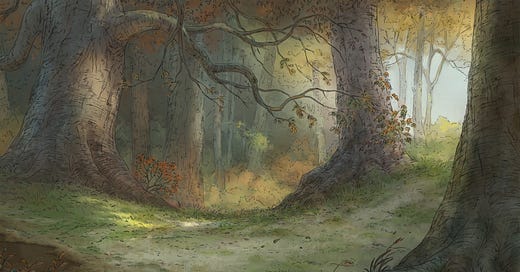



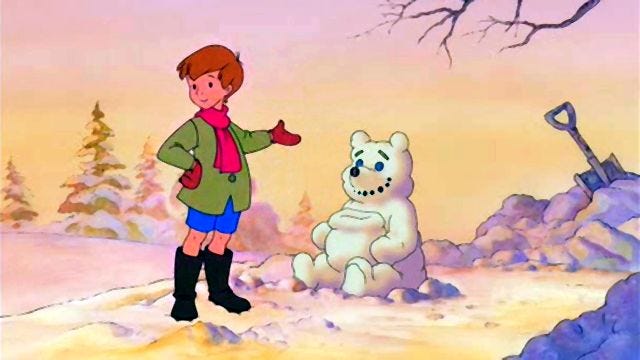
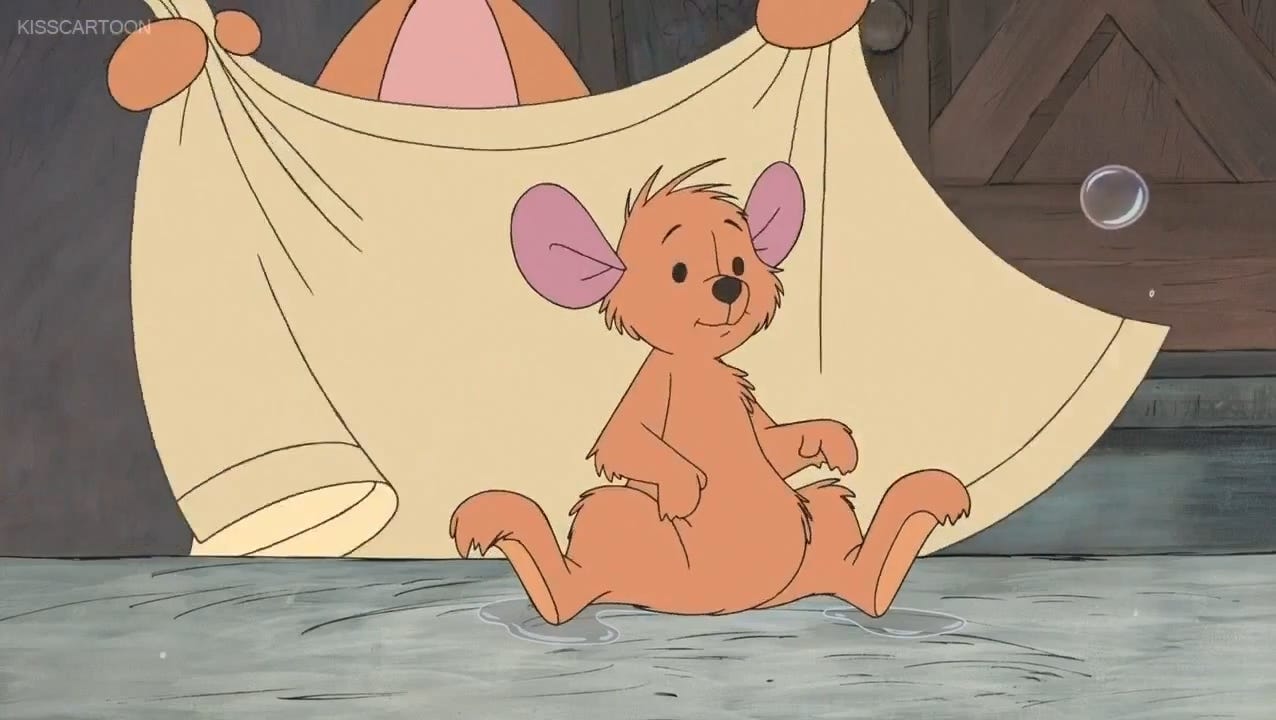

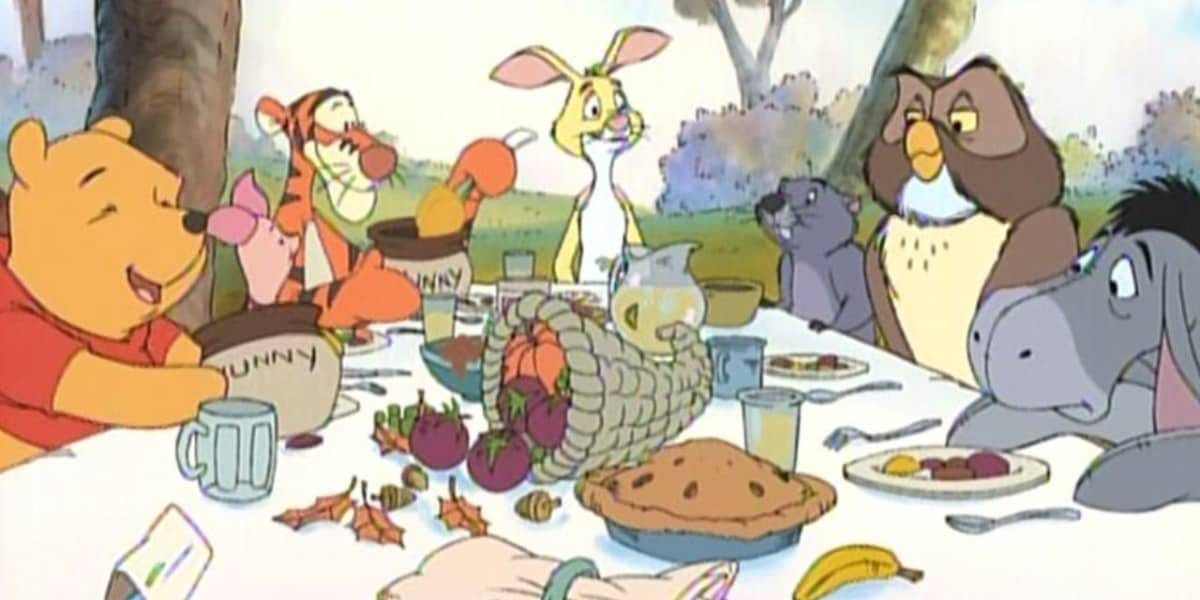
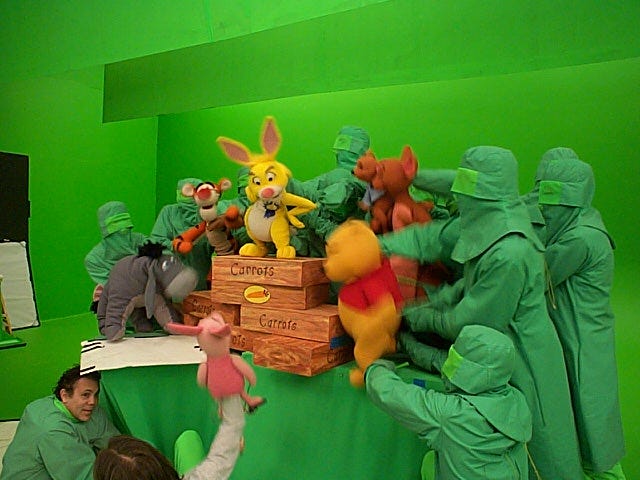


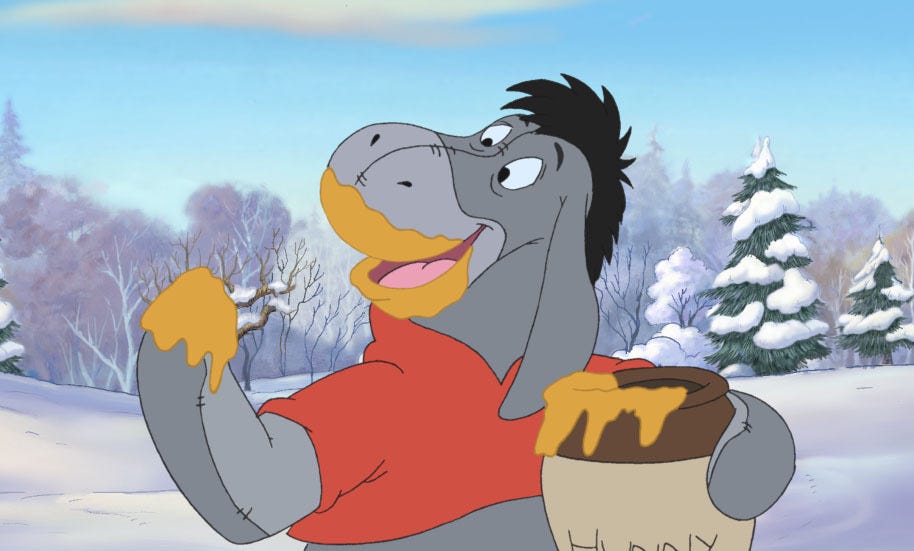
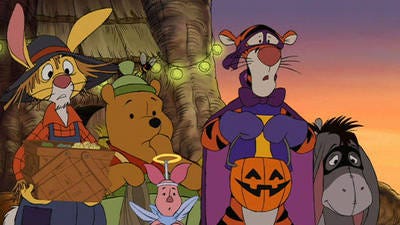
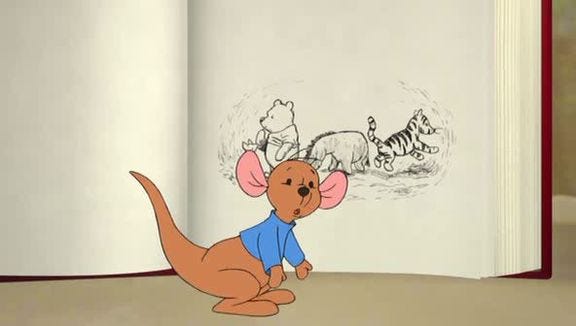
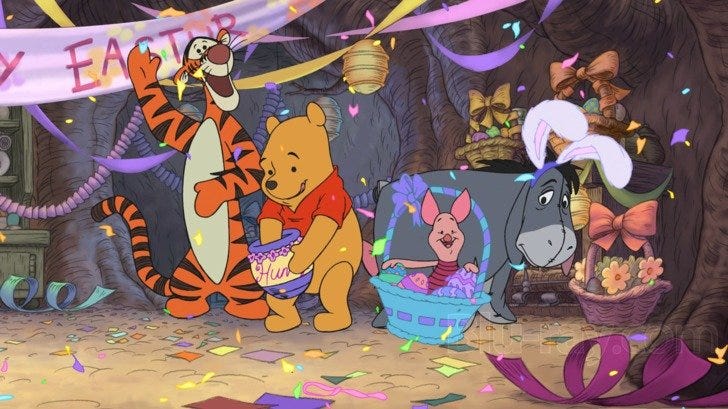


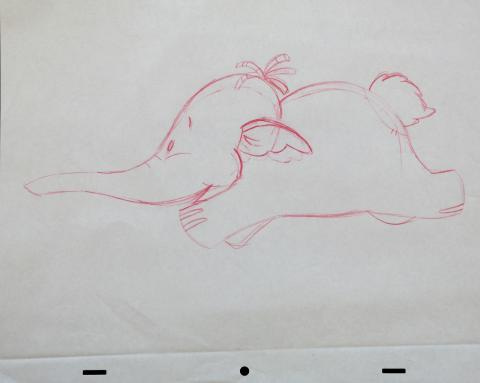

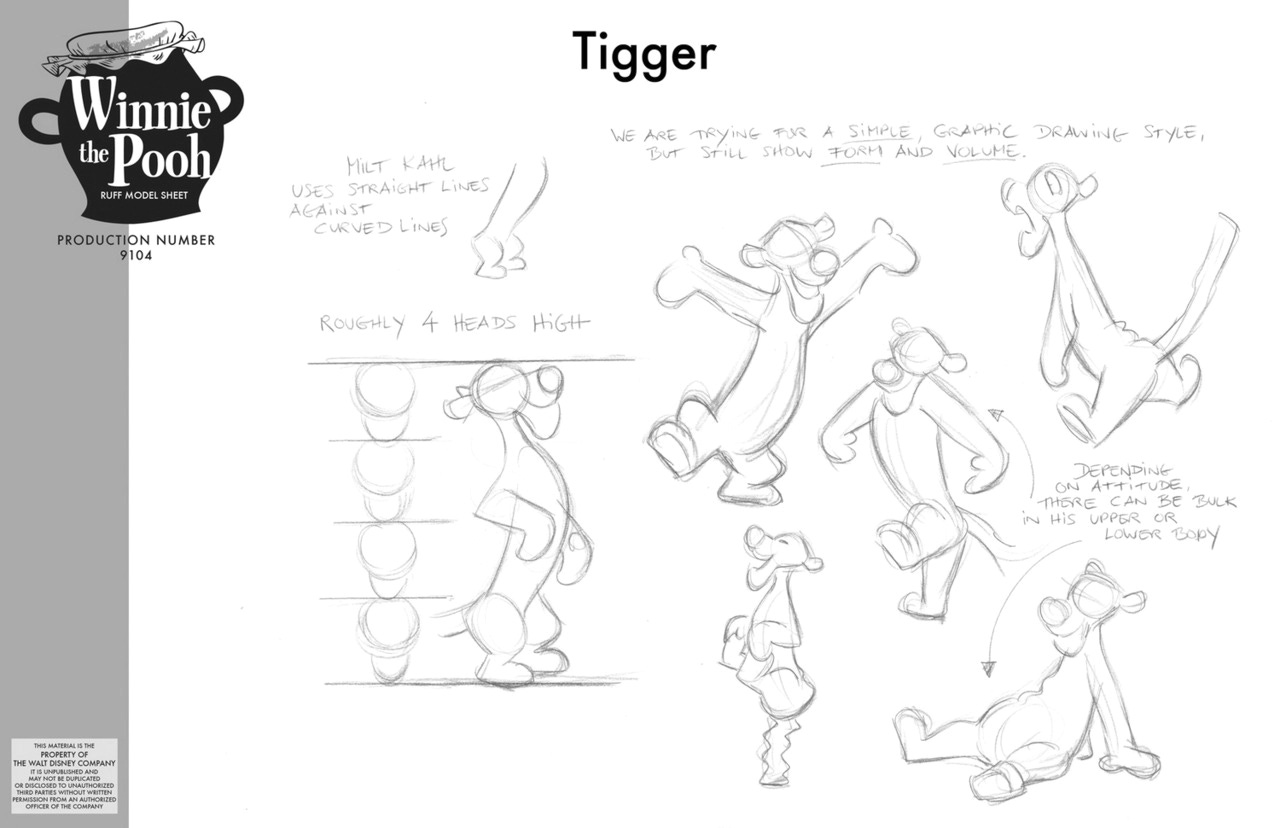
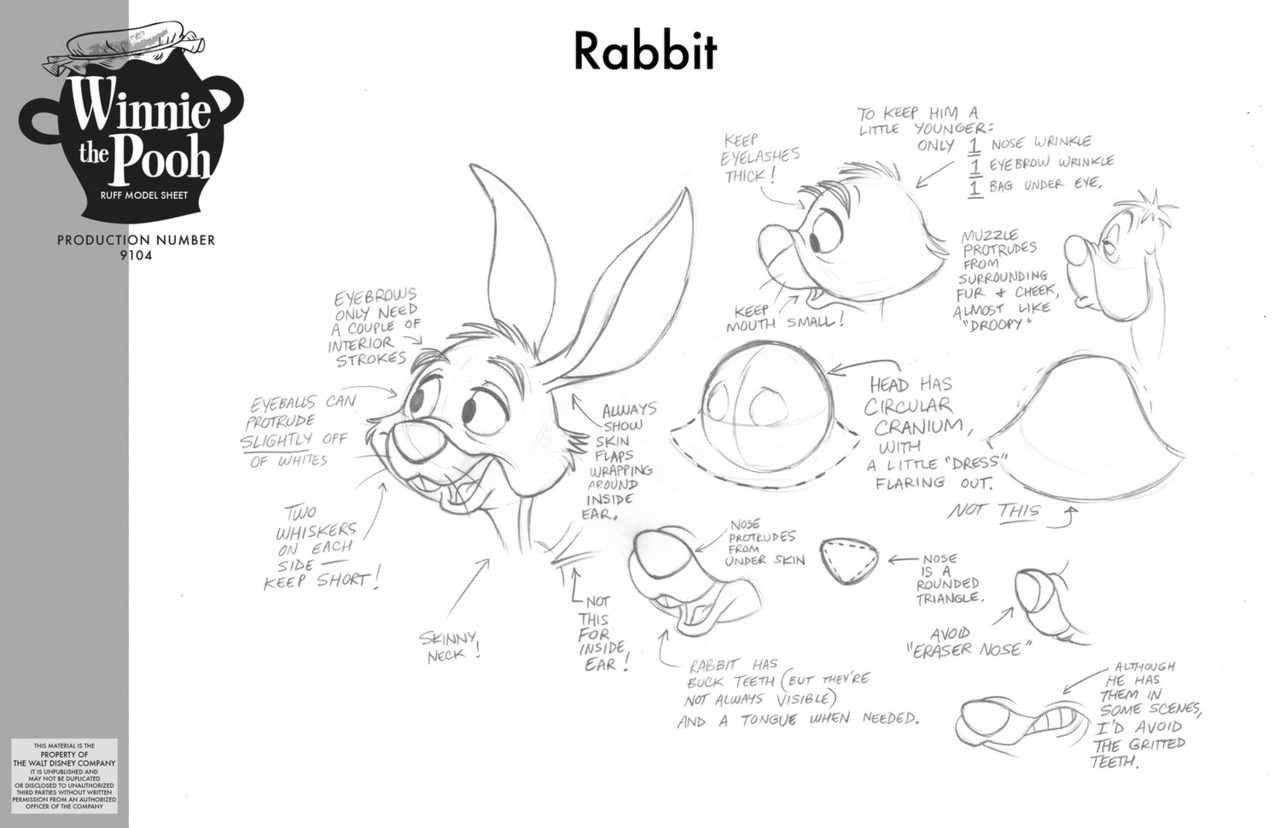
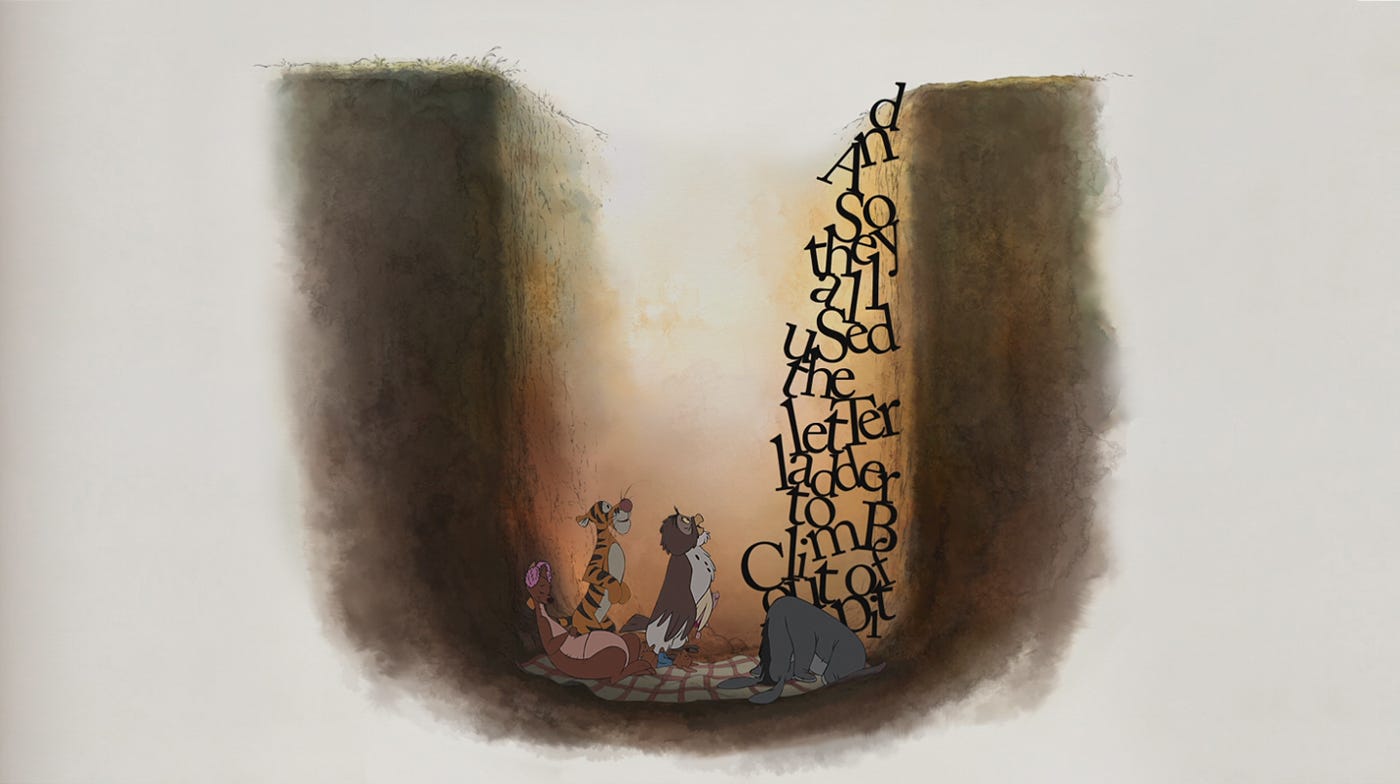
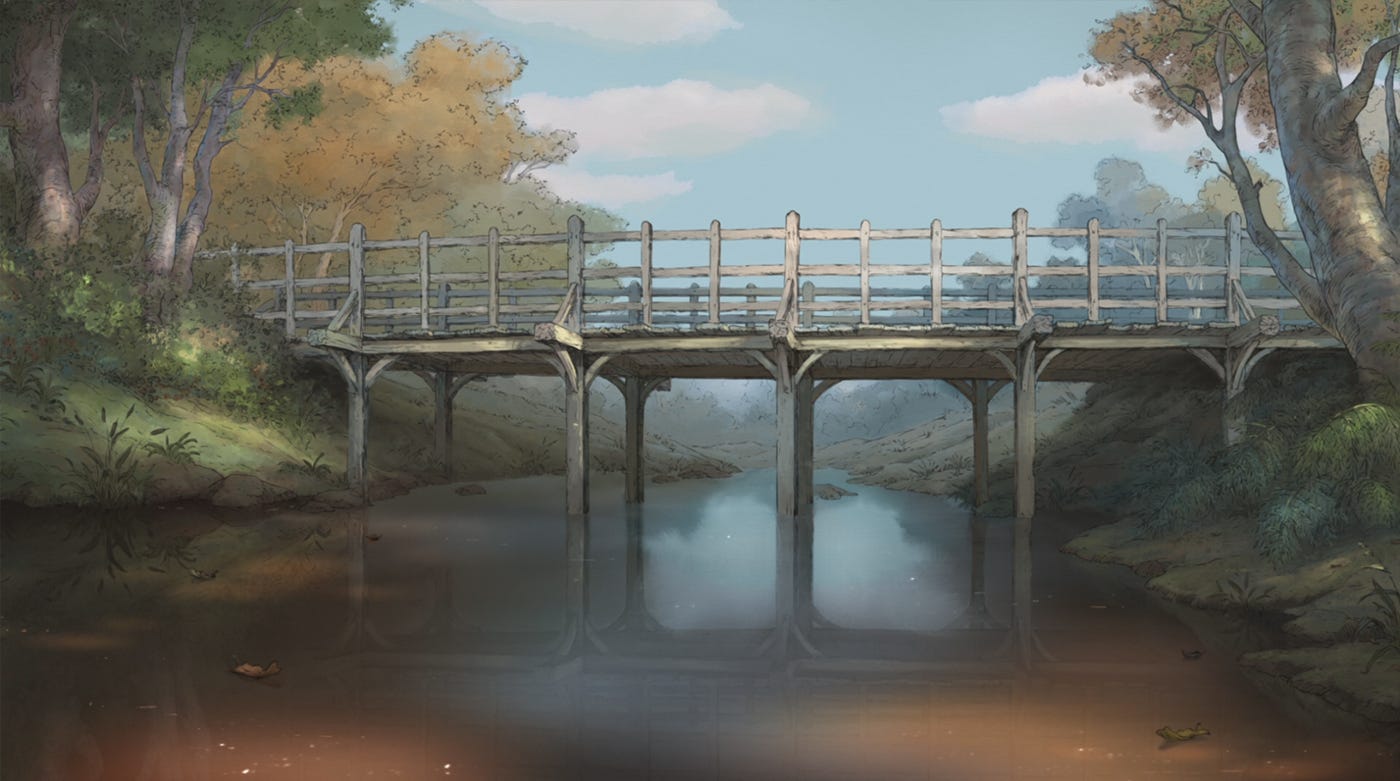
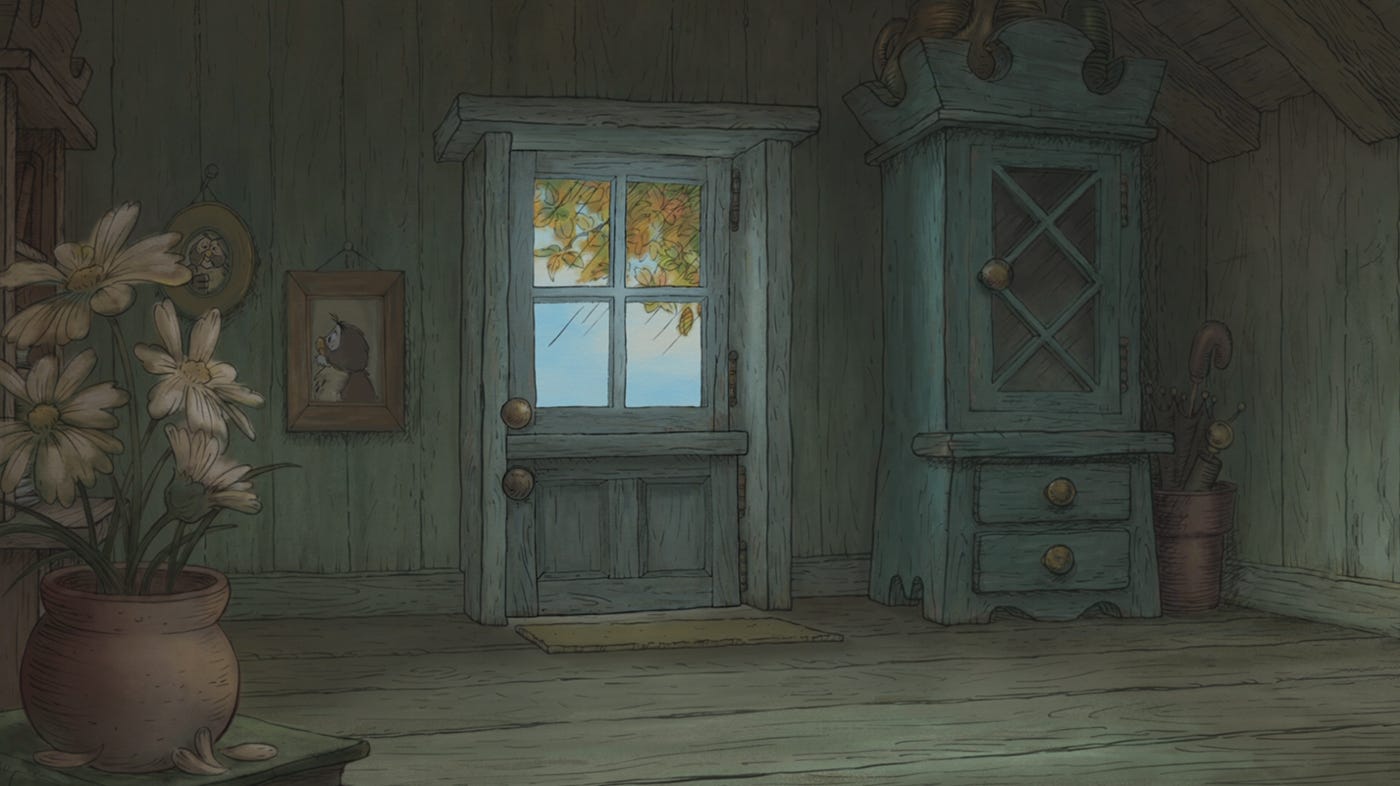
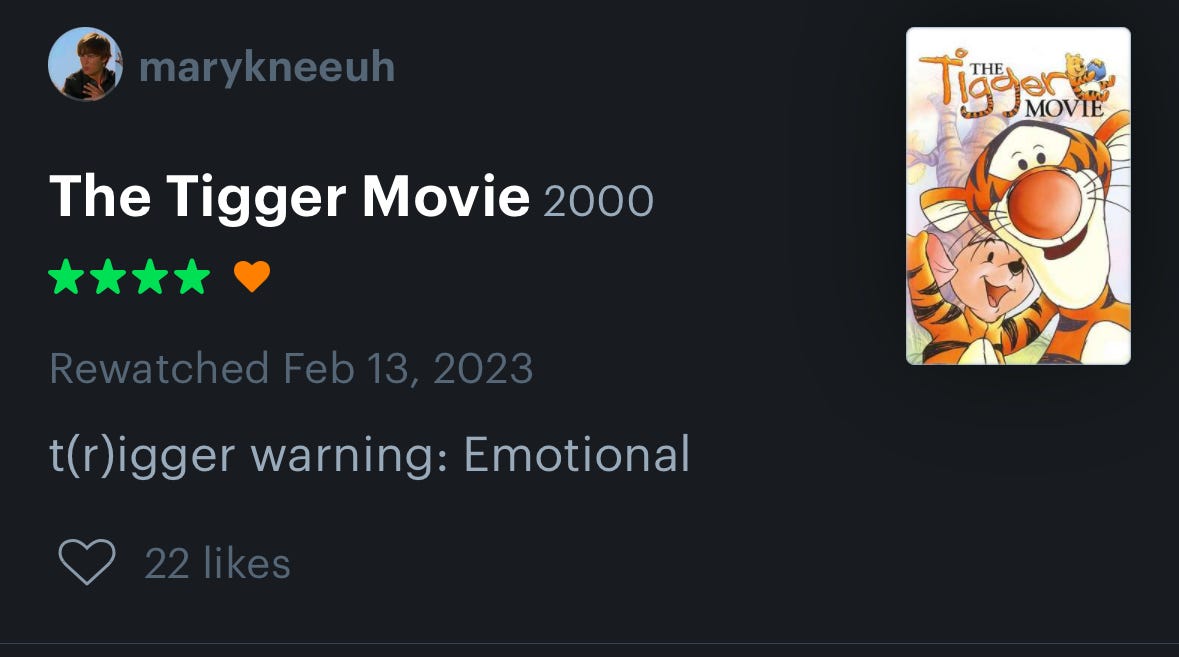
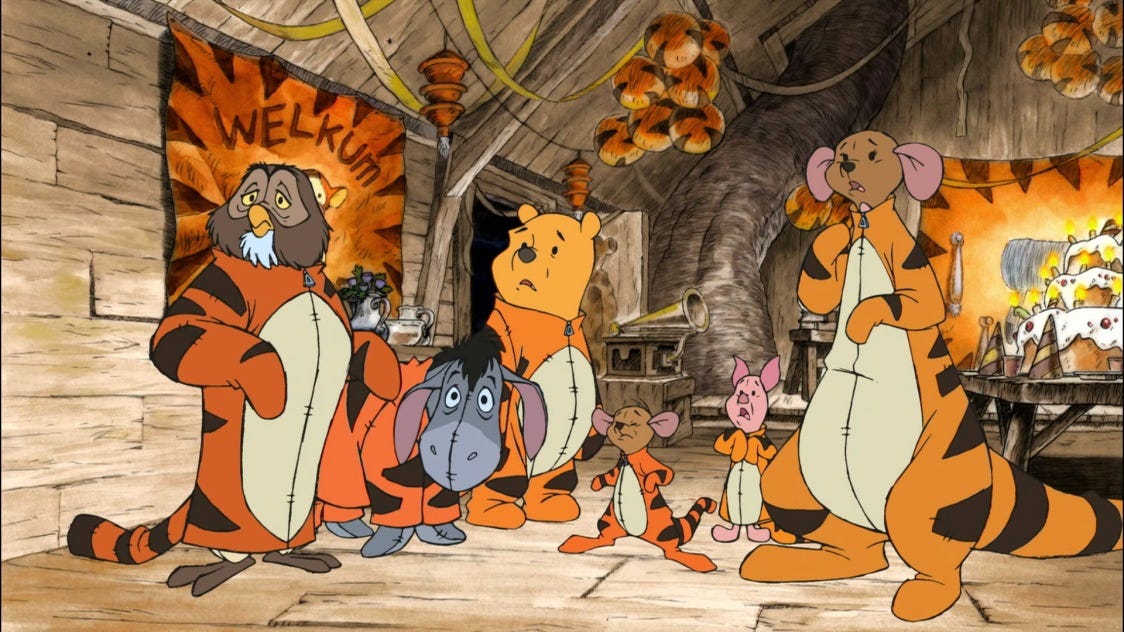
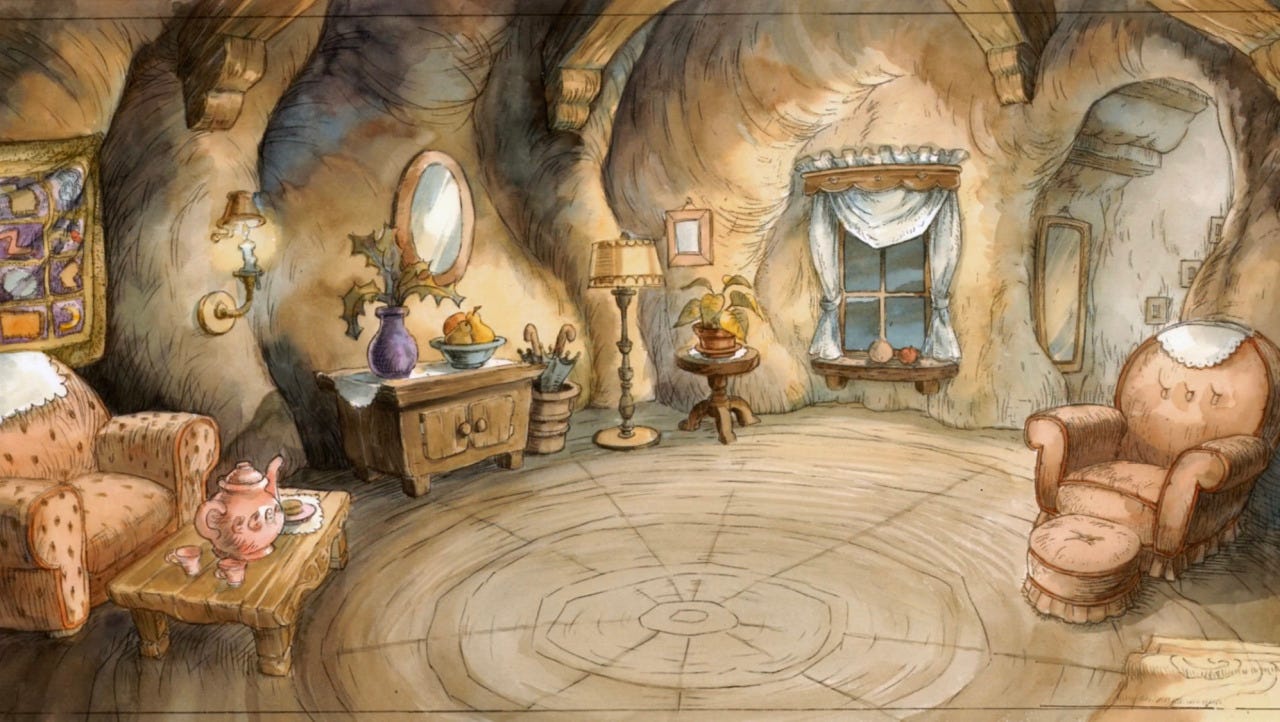

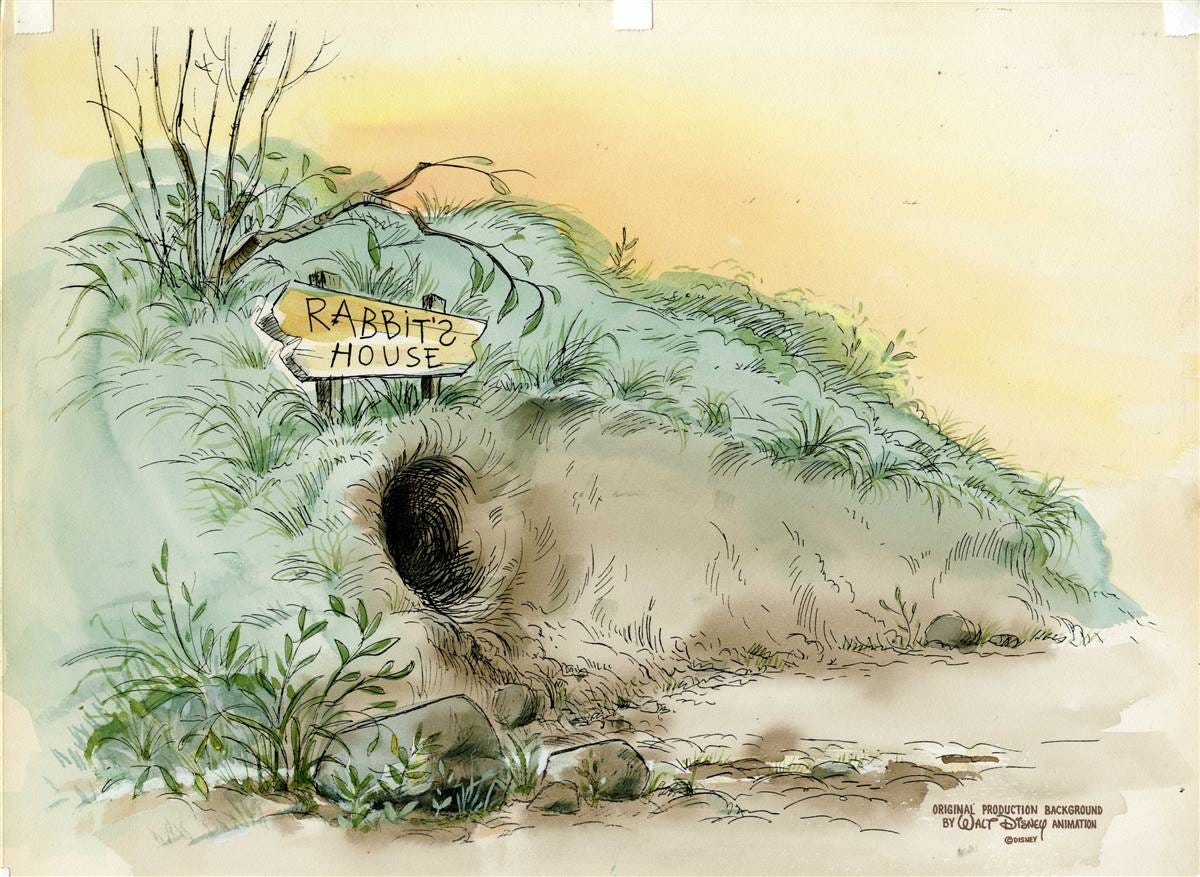
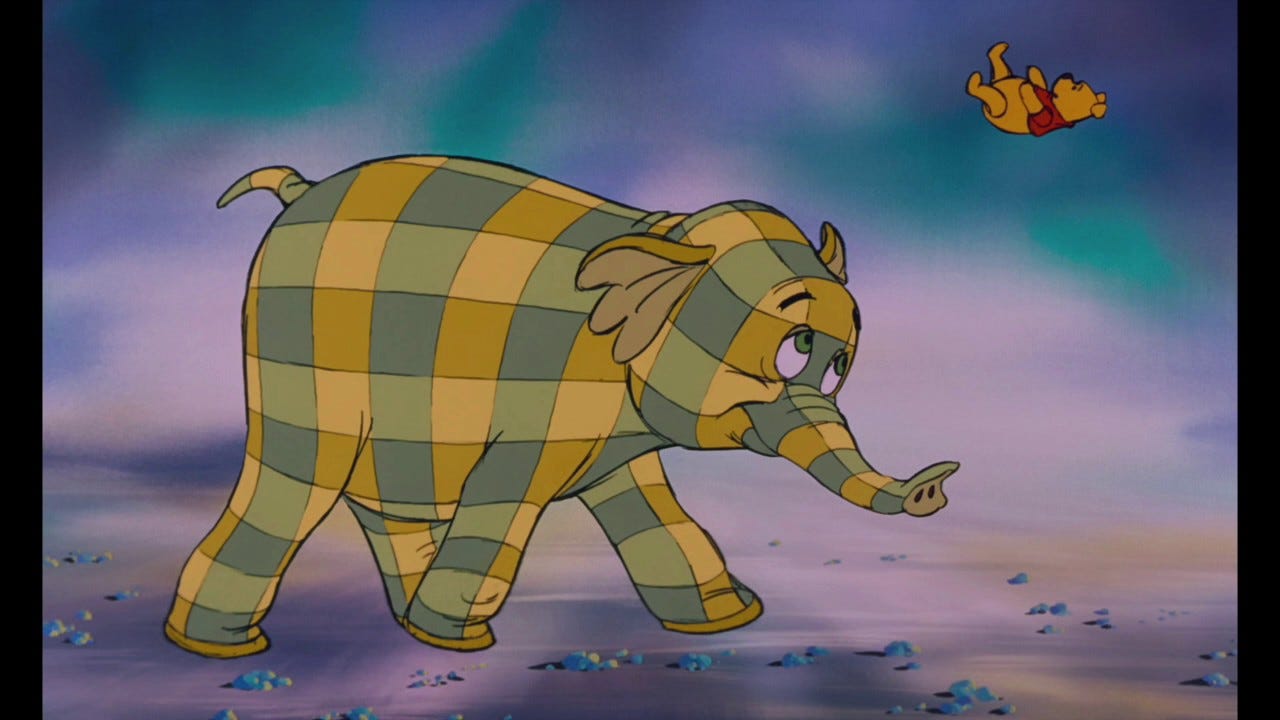
I love me some Hundred Acre Woods lore. Enjoyed reading this!